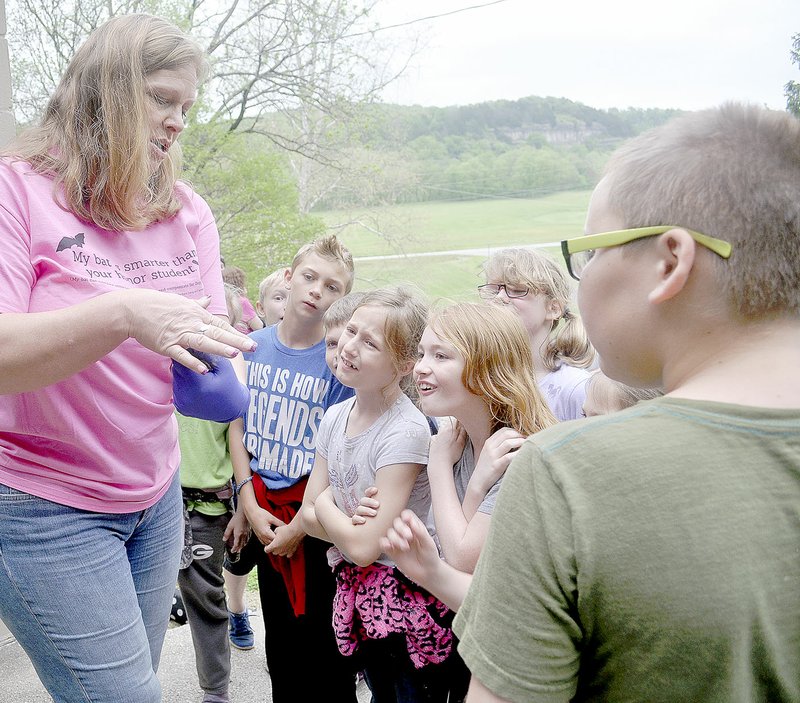A group of third-graders from Grove (Okla.) Lower Elementary School spent Tuesday at Bluff Dwellers Cave in Noel for an educational experience.
Kirsten Alvey-Mudd of the Missouri Bat Census brought a few live bats to show the children and told them about the flying mammals. All the bats she brought were raised by the Missouri Bat Census from the time they were babies, she said.
Alvey-Mudd said there are 1,300 species of bats worldwide. They fall into three categories, the largest of which is the megabat. It is about the size of the average kindergartner and has a wingspan the size of an adult male. The standard bat category is about the size of two fists stacked and includes the vampire bat. Alvey-Mudd said vampire bats drink the blood of cattle and an anticoagulant in their saliva has been used to create a stroke drug. The third and final category of bats is the microbat, which is found in North America. There are 16 species of bats in Missouri, she said. The largest of the cave bats is the big brown bat, which is the type Alvey-Mudd brought with her on Tuesday. The adult bat fit neatly in the palm of her hand.
She discussed bats' diets and their impact on the ecosystem. One bat can eat 1,000 mosquitoes per hour, she said. She invited the children to imagine being outside with 1,000 more mosquitoes. However, she continued, mosquitoes are like appetizers to a bat. For a meal, a bat would like moths, crickets, root worms or corn silk worms. A colony of bats can eat 33 million root worms in a season, she said. Bats really enjoy corn silk worms, she added. She described the good that bats do by saving corn crops from the worms. Corn on the cob, corn chips, corn-fed cattle, ethanol and corn-syrup-sweetened beverages are all things she pointed out that the children used that they can thank the bats for. The bats are "free pesticide control," Alvey-Mudd said. Without them, farmers would have to use many more chemicals that would stay behind for generations to come.
She talked about the bats' use of echolocation to find their way in the dark, their sharp teeth used to crunch through the exoskeleton of insects and their naturally curling toes used to hang upside down while sleeping. She discussed white nose syndrome, a fungus that grows on bats' wings and noses and causes them to wake up too often during hibernation. That can cause the bats to not survive the winter.
Students were also given the opportunity to feed a bat a meal worm with a pair of forceps.
Besides the live bat presentation, students also toured the cave and the museum and played games.
Carol Hunsperger, a teacher from Grove Lower Elementary School, said the third grade has been coming to Bluff Dwellers Cave for about three years. A teacher, Dietra Biely, wrote a grant to help pay for the field trip, she said.
"It's special to our grade. The kids love it and they learn a lot," Hunsperger said. "We do a unit in school about caves and water conservation."
General News on 04/28/2016
